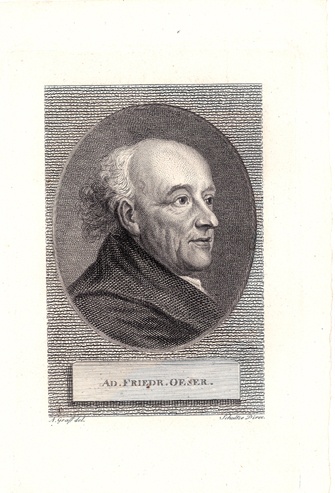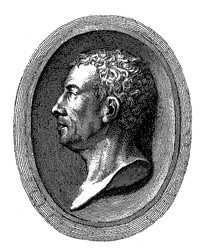Das Porträtkupfer schuf Christian Gottfried Schulze (1749-1819) nach dem um 1770 in Leipzig entstandenen Gemälde von Anton Graff (heute Museum der bildenden Künste Leipzig). Winckelmann lernte den seit 1739 in Dresden ansässigen Maler Adam Friedrich Oeser (1717-1799) in seiner Nöthnitzer Zeit kennen. Er wurde sein Zeichenlehrer, zugleich verband beide zeitlebens eine Freundschaft. 1755, vor seinem Aufbruch nach Rom, nahm Winckelmann in Oesers Haus in Dresden Quartier.
Porträt nach rechts im Oval, darunter Namenstafel: Ad. Friedr. Oeser..
Bezeichnet:
u.l.: A. Graff del.
u.r.: Schulze Direx.
Ad
en

